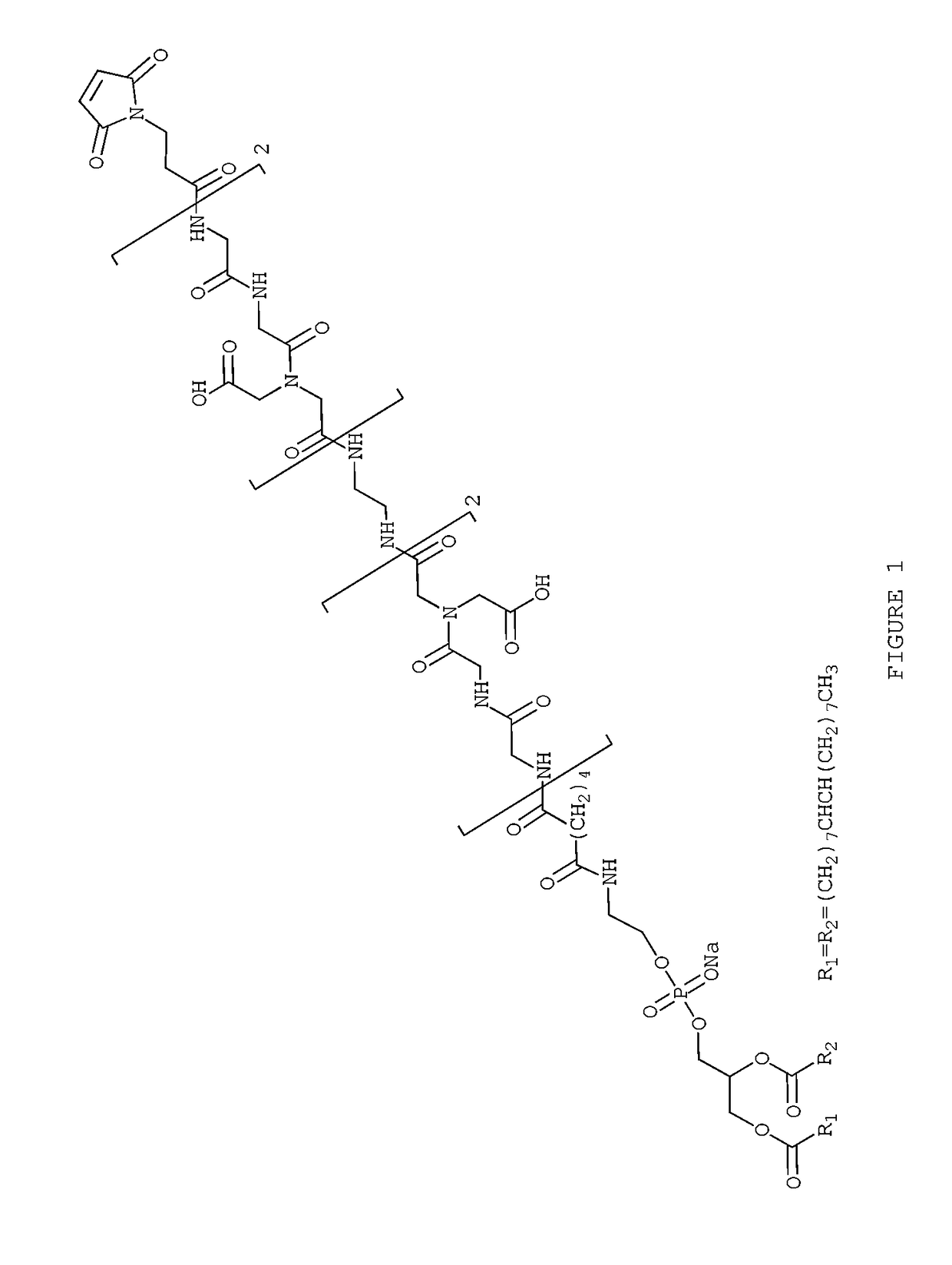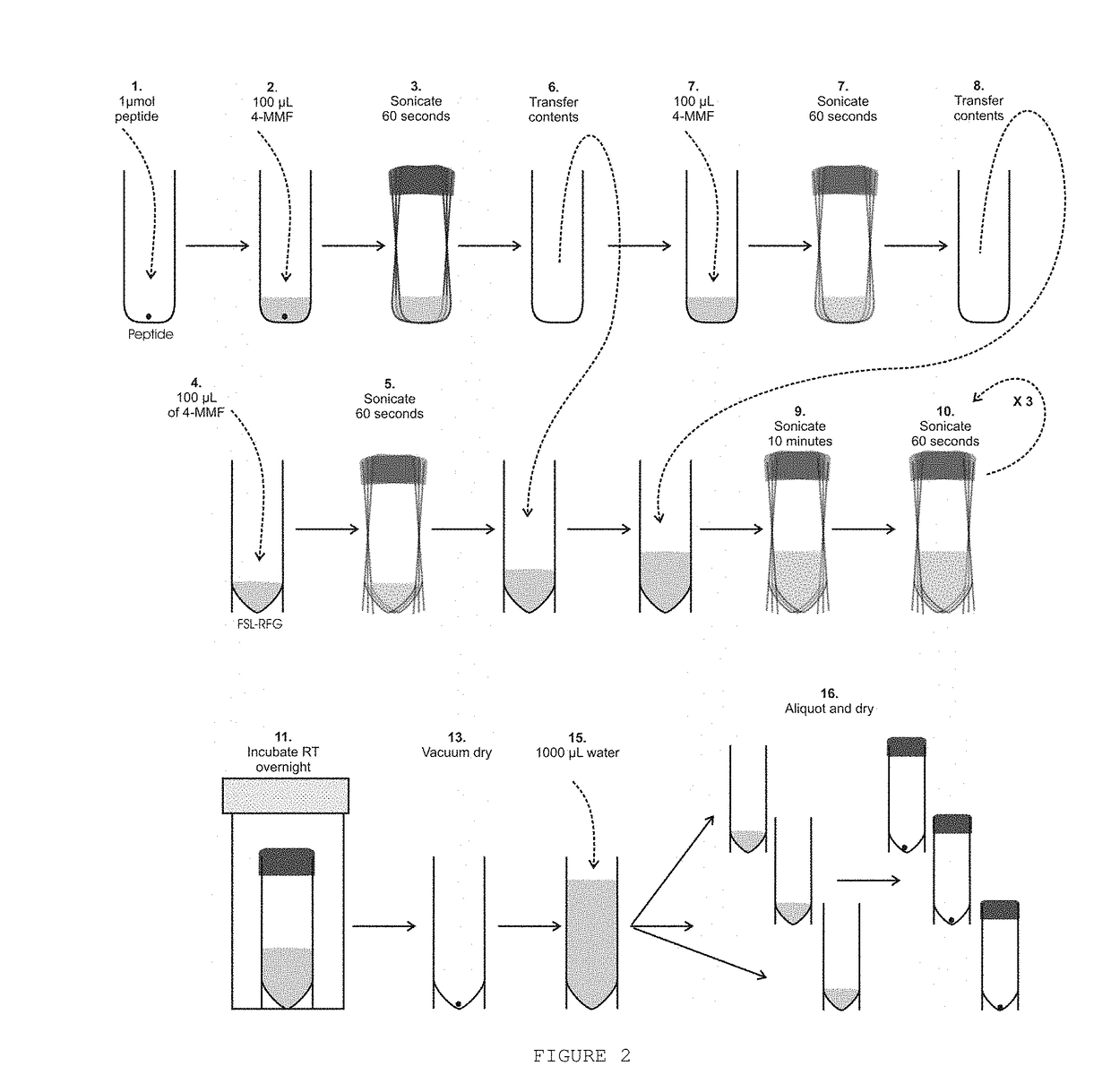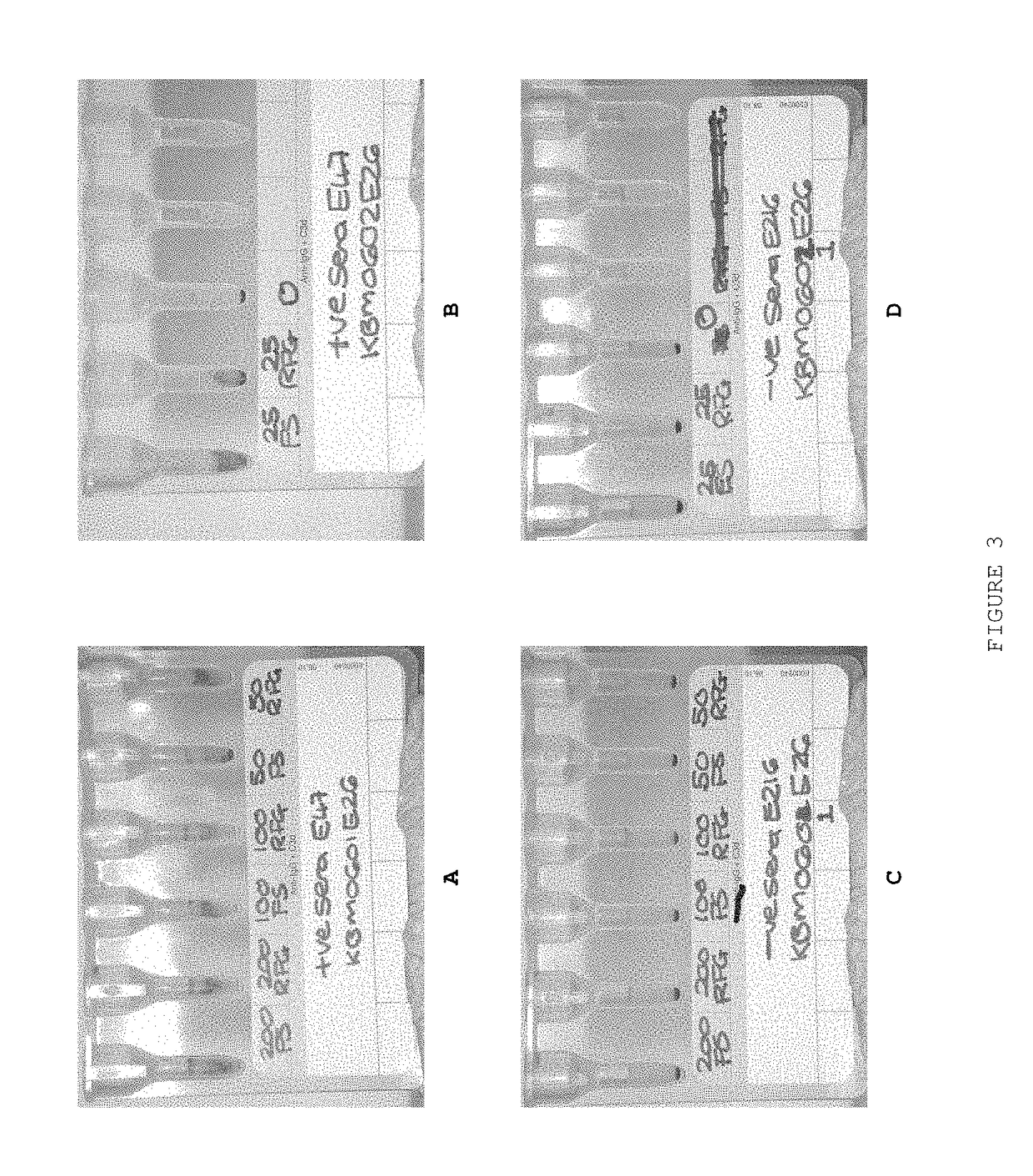Facile laboratory method for localising biomolecules to the surface of cells and viruses
a laboratory method and technology for biomolecules, applied in the field of fluctuation laboratory methods for localising biomolecules to the surface of cells and viruses, can solve the problem that the use of kodeTM constructs by researchers in biological laboratories is for the most part restricted to the use of kodeTM constructs
- Summary
- Abstract
- Description
- Claims
- Application Information
AI Technical Summary
Benefits of technology
Problems solved by technology
Method used
Image
Examples
specific example
[0118]The properties of a peptide-lipid construct and kodecytes prepared therefrom according to the method of the invention were compared with the properties of the same peptide-lipid construct (FSL-SYPH3) and kodecytes prepared therefrom according to known methods (Henry et al (2010)).
Materials
[0119]Blood group O packed red blood cells (RBCs) were washed with phosphate buffered saline (PBS). Washed RBCs were suspended in cell preservative (CELPRESOL™). PBS for the preparation of dilutions of constructs was filter sterilised. Stock solutions were prepared at a concentration of 200 μg / mL in PBS. Positive (POS) and negative (NEG) sera were chosen from a panel that had been previously determined by RPR, TPHA, and TPPA.
Methods and Results
[0120]A volume of 2 mL of filter sterilised PBS was added to a vial containing 400 μg of the construct designated FSL-SYPH3 to provide a stock solution of 200 μg / mL. The dispersion was vortexed and warmed to 37° C. for ten minutes. A stock solution of t...
PUM
| Property | Measurement | Unit |
|---|---|---|
| pH | aaaaa | aaaaa |
| temperature | aaaaa | aaaaa |
| concentration | aaaaa | aaaaa |
Abstract
Description
Claims
Application Information
 Login to View More
Login to View More - R&D
- Intellectual Property
- Life Sciences
- Materials
- Tech Scout
- Unparalleled Data Quality
- Higher Quality Content
- 60% Fewer Hallucinations
Browse by: Latest US Patents, China's latest patents, Technical Efficacy Thesaurus, Application Domain, Technology Topic, Popular Technical Reports.
© 2025 PatSnap. All rights reserved.Legal|Privacy policy|Modern Slavery Act Transparency Statement|Sitemap|About US| Contact US: help@patsnap.com



